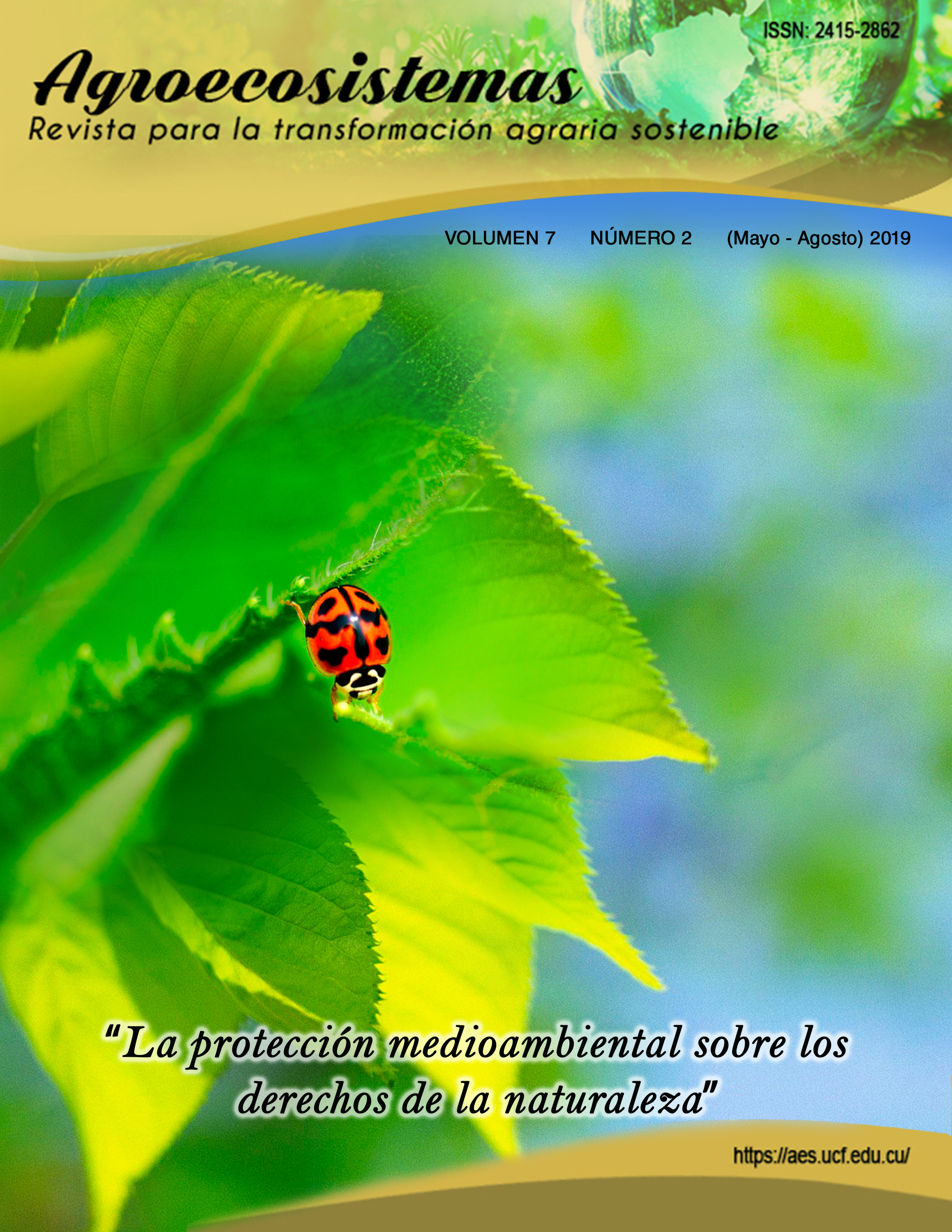Emergencia y desarrollo del maíz (Zea mays L.) en un suelo contaminado con Hidrocarburos Totales del Petróleo en fase inicial y a 340 días de biorremediación en biopilas
Abstract
La investigación se realizó en condiciones semicontroladas en bolsas con 2 kg de suelo Pardo Grisáceo contaminado de forma simulada con residuo petrolizado en concentración de 10 000 mg.kg-1 HTP en tiempo cero y posteriormente sometido a biorremediación en biopilas durante 340 días con texturizantes alternativos: bagazo, cachaza, aserrín, pulpa de café, estiércol vacuno y thalassia. Se condujo en un diseño de Bloques al azar con ocho tratamientos: seis texturizantes, control de hidrocarburo y testigo, cuatro réplicas y maíz como cultivo indicador. La presencia de hidrocarburos en fase cero de las biopilas no comprometió la germinación del maíz, pero si su posterior desarrollo foliar. El peso seco de las raíces se favoreció por la presencia de hidrocarburos en tiempo cero y 340 días, sin correspondencia con el peso foliar. El Índice de Impacto Fitotóxico (IIF) confirmó afectaciones de las plantas de maíz en tiempo cero por la presencia de HTP. Después de transcurridos 340 días del proceso en biopilas este índice no mostró afectaciones en la variante estiércol vacuno, sin embargo hubo efectos negativos en los tratamientos con bagazo, aserrín y cachaza.
Palabras clave:
Zea mays, contaminación, hidrocarburo, biorremediación.
ABSTRACT
The investigation was carried out under semicontrolled conditions in bags with 2 kg of polluted Grizzly brown soil in a feigned way with crude oil residual in concentration of 10 000 mg.kg-1 HTP in zero time and later on subjected to bioremediation in Biopilas during 340 days with alternative texturer: trash, phlegm, sawdust, pulp of coffee, bovine manure and thalassia. The experiment was behaved at random in a design of blocks with eight treatments: six texturer, hydrocarbon control and witness, four replicas and Maize as indicator cultivation. The presence of hydrocarbons in zero phase of the biopilas didn't commit the germination of the maize, but if its later development to foliate. The dry weight of the roots was favored by the presence of hydrocarbons in zero time and 340 days, without correspondence with the weight to foliate. The Index of Impact phytotoxic (IIF) it confirmed affectations of the plants of maize in zero time for the presence of HTP. After having lapsed 340 days of the process in biopilas this index didn't show affectations in the varying bovine manure, however there were negative effects in the treatments with trash, sawdust and phlegm. The assimilable phosphorus and potassium, pH and the organic matter in the soil were highest in the polluted treatments HTP, independently of the lapsed time in biopilas.Keywords:
Zea mays, contamination, hydrocarbons, bioremediation.Downloads
Published
How to Cite
Issue
Section
License
La editorial "Universo Sur", de la Universidad de Cienfuegos, publica el contenido de la Revista Científica Agroecosistemas bajo una Licencia Creative Commons Atribución-NoComercial-SinDerivar 4.0 Internacional.
© Podrá reproducirse, de forma parcial o total, el contenido de esta publicación, siempre que se haga de forma literal y se mencione la fuente.






